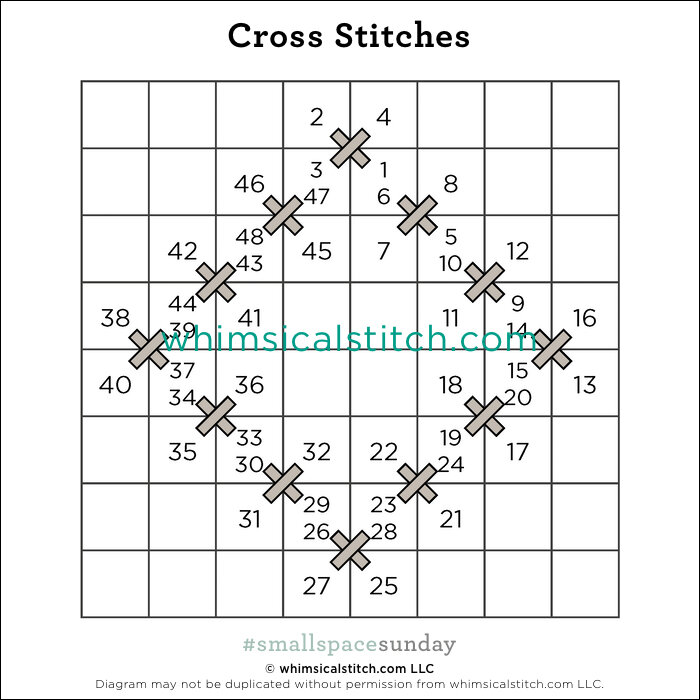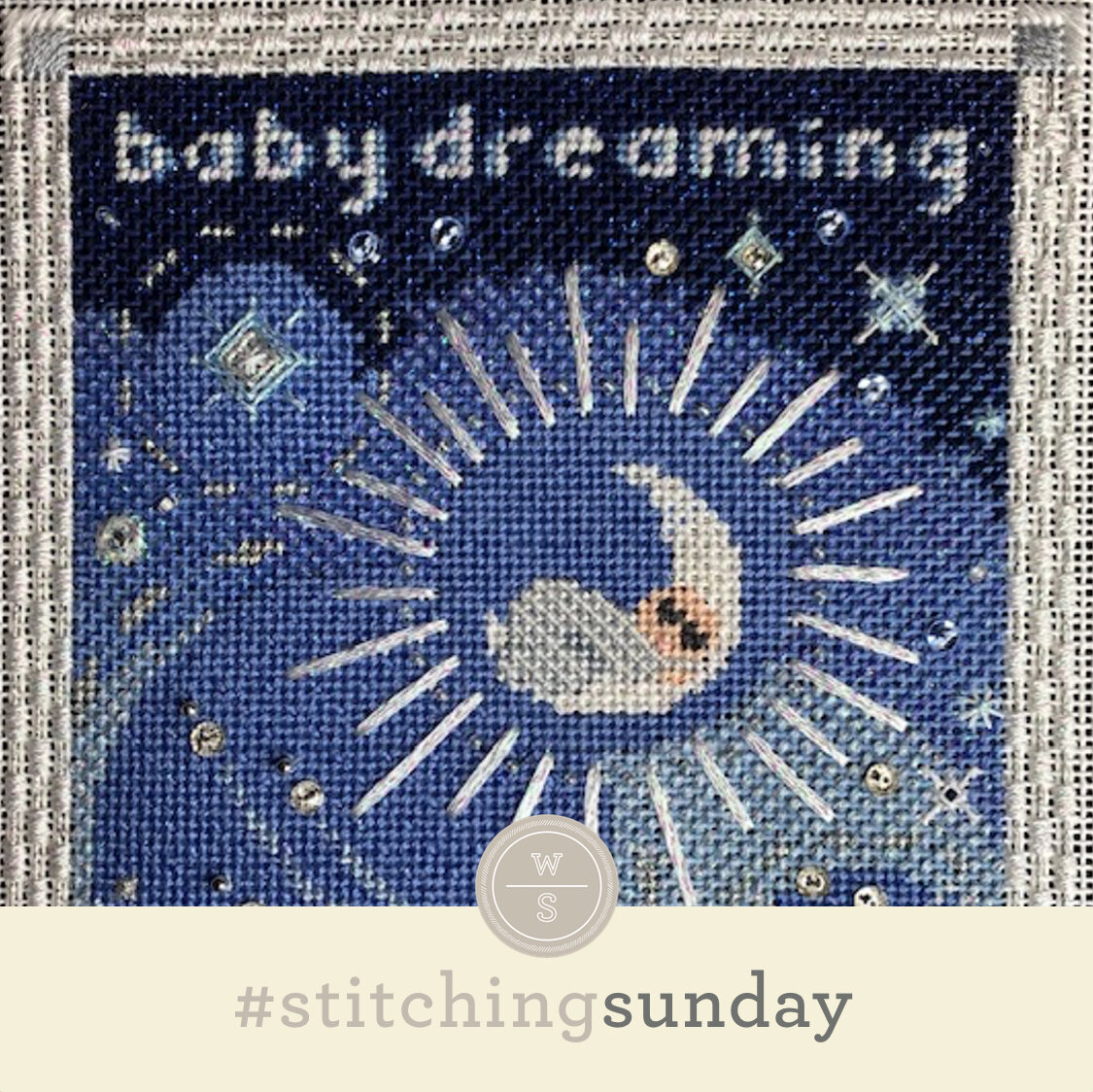As promised, today’s #stitchingsunday introduces you to the very smartly dressed Santa from my tree. Today’s stitch is from a forever ago blog post and is also included on page 203 of my first book.
Today’s stitched sample is a Santa roll-up from my early days of decorative stitching. The stitched sample uses Neon Rays (black lines) and Flair (yellow lines). The original blog post presents this same stitch on the horizontal, so it’s kinda fun to see the different looks. It’s a fantastic small space stitch. I talk a little about how to navigate the extra bulk this stitch can add, which can be a great feature for certain stitch areas.
This stitch diagram, along with all other #whimsicalwednesday and #smallspacesunday stitch diagrams, can also be found on a Pinterest board here.
Be sure to follow whimsicalstitch.com on Facebook, Pinterest, Instagram, and Twitter.
If you like what you see on this blog, want to learn some very creative decorative stitches, and how to put them all together, whimsicalstitch.com has a book for you! Mary’s Whimsical Stitches is a contemporary how-to collection of more than 250 stitches for stitchers regardless of skill level. The book includes updated and sequenced diagrams from this blog, all-new stitches, and a chapter on the basics of needlepoint. For more information, visit here. Retailers carrying the book can be found here.
whimsicalstitch.com also sells Stitch Guides and Stitch Concepts for Melissa Shirley Designs, Zecca Designs, Sandra Gilmore, Purple Palm, Maggie, and Penny MacLeod, and many more. Click here to see the newest guides and click here to see the entire collection.
I hope you have the perfect spot for this stitch! Happy #stitchingsunday!
A Note about Diagrams
I use color in diagrams to make them as clear as possible. The primary function of different colored lines is to illustrate a stitch sequence. For example, layering of colors demonstrates you add them in that order. They can also provide ideas on how to integrate additional threads (one line for each color). Or, you can use the same thread for all color lines. That's where I encourage you to use your imagination for the space you are stitching!



















